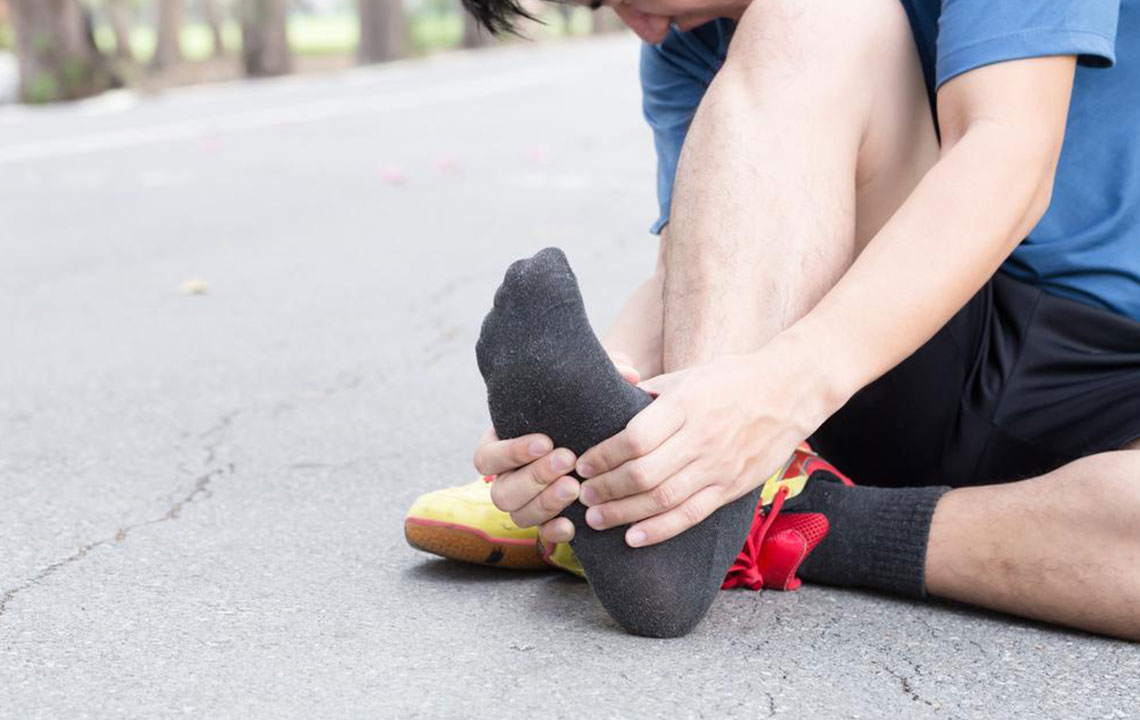Treatment Options for Plantar Fasciitis
When the plantar fascia (a band of tissue running underneath the sole of the foot) thickens, it is termed as “Plantar Fasciitis”
The reason behind the thickening can be a recent injury or damage, or can be an accumulation of smaller injuries over the years.
Initial Treatment with Identification of Causes of Plantar Fasciitis
In order to understand the methods for treatment of Plantar Fasciitis, it is imperative to first understand the triggers and causes of the condition so that the same may be stopped as an immediate measure of treatment and prevention of further damage.

- Being overweight
- Taking up a new form of exercise or suddenly increasing the intensity of one’s exercise.
- Standing on your feet for many continuous hours each day
- Medical conditions like rheumatoid arthritis or lupus (systemic lupus) can because of plantar fasciitis
- Wearing high-heeled shoes, and shifting suddenly to flat shoes
- Wearing shoes that are worn out with weak arch supports and thin soles
- Having flat feet or an unusually high arch
- Having legs of uneven lengths or an abnormal walk or foot position
- Having tight Achilles tendons, or ‘heel cords’
What are the symptoms of plantar fasciitis?
There are not many symptoms for plantar fasciitis, but pain can be one of the main symptoms.
Symptoms include:
The symptoms of plantar fasciitis include:
- Pain in the bottom of your foot, especially at the front or centre of the heel bone.
- Pain that is worse when first rising in the morning (called “first-step pain”), after increased levels of activity especially in non-supportive shoes, or when first standing up after any long period of sitting.
You need to seek the medical advice for plantar fasciitis if,
You experience heel pain or pain is in the bottom of your foot, usually when you get up in the morning, pain that occurs on standing up after long period of sitting, pain that does not respond to any treatment, or if there is bruising or redness in the heel.
How will you know that you have a plantar fasciitis?
In most of the cases, plantar fasciitis is diagnosed by your doctor. You will be needed to undergo various examinations in case your doctor or health care provider has a doubt of plantar fasciitis after carefully listening to your description of symptoms.
Your healthcare provider is most likely to press on the bottom of your feet – the area which is most painful in plantar fasciitis condition.
The pain of plantar fasciitis has unique characteristics which include:
- pain upon rising
- improvement after walking for several minutes
- pain produced by pressure applied in a specific location on your foot but not with pressure in other areas
Your health care provider might suggest you to have an X-RAY of your foot just to make sure that there is no stress fracture which is causing the pain.
What are the goals for treatment of plantar fasciitis?
- The main goal is to relieve inflammation and the pain in the heel.
- Improve your strength and flexibility and correct the foot problems.
- To allow small tears that is present in plantar fasciitis ligament to heal.
- To allow you to go back to your day to day or normal daily life activities.
Treatment of Plantar Fasciitis:
There are many methods which help in healing this kind of pain and which are helpful in the treatment of Plantar Fasciitis
Early Treatment:
- Rest Your Feet: You’ll be needed or advised by your doctor to limit or stop the activities that are causing your heel pain. This can include walking or running on hard surface making it one of the easiest treatment of plantar fasciitis.
- You can put ice on the area which is paining in order to reduce inflammation and relieve pain. nonsteroidal anti-inflammatory drug (NSAID) such as ibuprofen or naproxen can also be tried.
- Heel Pad: A cushion or something soft can give you some comfort.
- Stretching: Stretching exercises for three to four times daily can help elongate the heel cord.
- You can wear shoes with good shock absorption and the right arch support for your foot.
- As soon as you get out of your bed, put on your shoes. Going barefoot or in slippers can worsen the pain.
- A night splint:A night splint is sometimes used to hold your foot at a specific angle, which prevents the plantar fascia from shortening during sleep.
- Ultrasound: An ultrasound can be performed in order to reduce inflammation and aid healing.
- Steroid injections: They are great option when it comes to treatment of plantar fasciitis. However, if these injections are used too many times, you may suffer other complications.
- Surgery: The most common treatment of plantar fasciitis is called a plantar fascia release and involves releasing a portion of the plantar fascia from the heel bone.